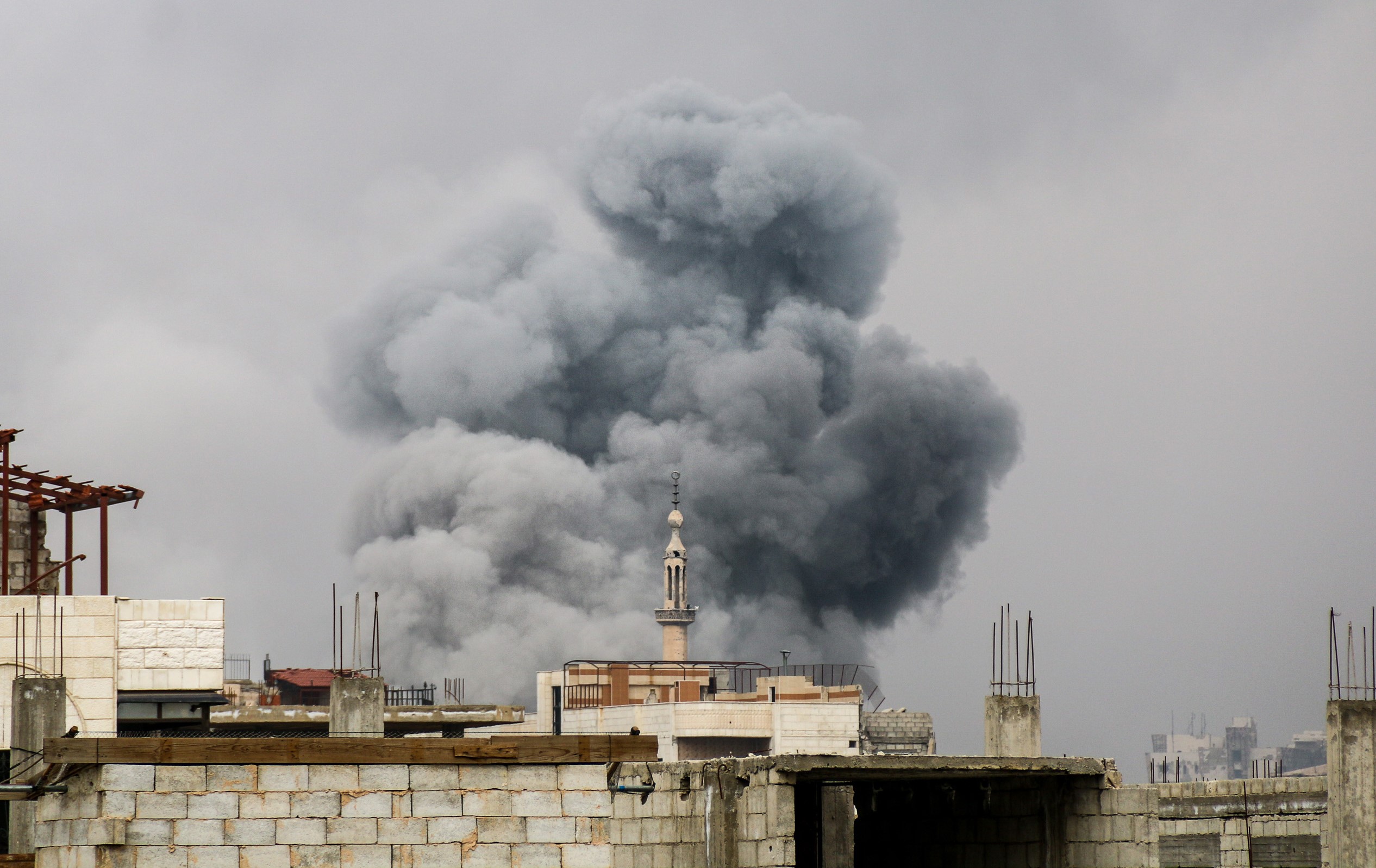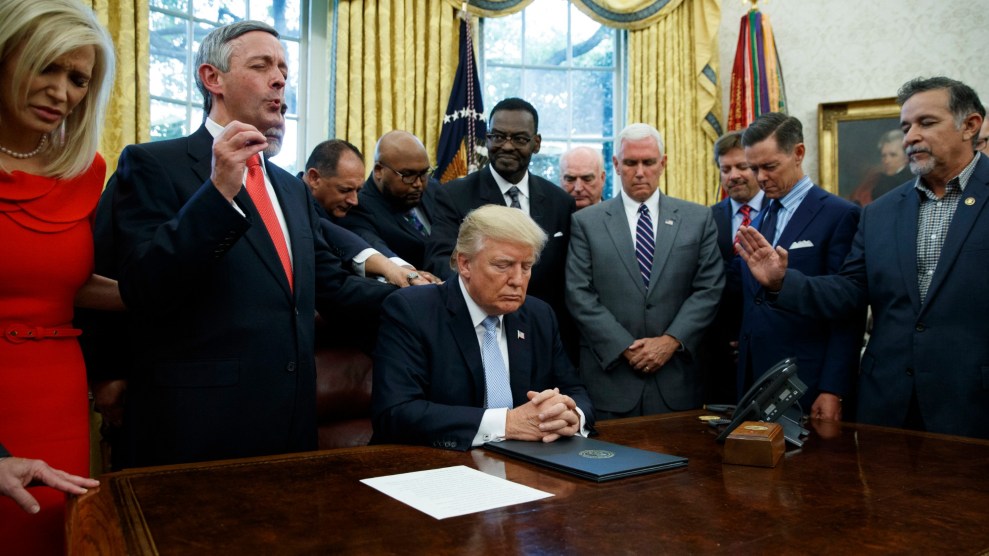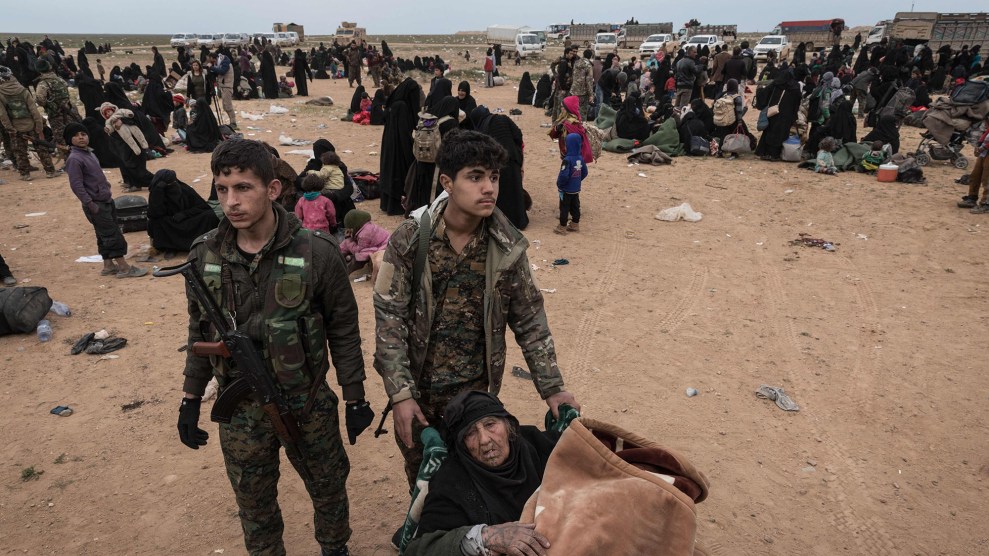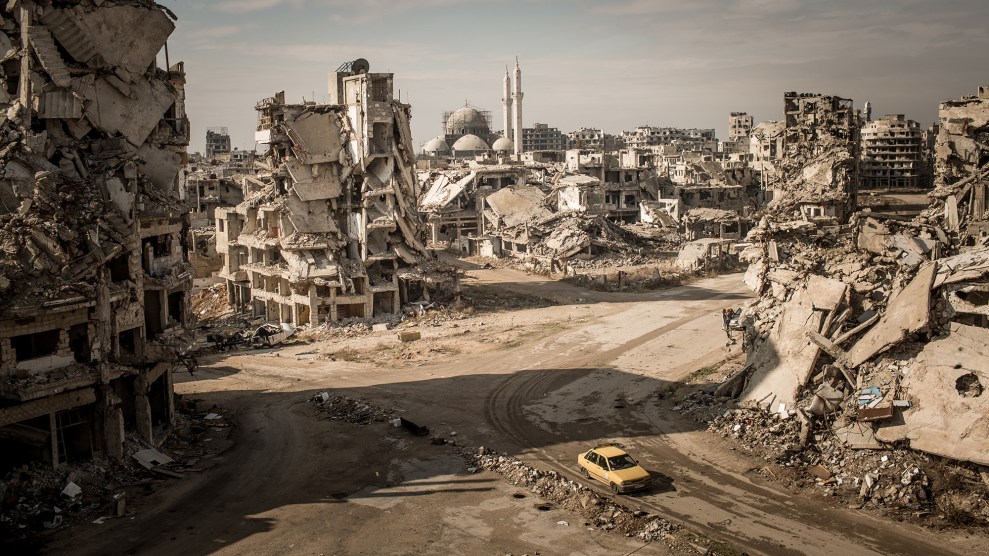Adapted from Perilous Medicine: The Struggle to Protect Health Care From the Violence of War by Leonard Rubenstein (Copyright 2021, Columbia University Press). Used by arrangement with the Publisher. All rights reserved.
In 1996, I started a new job as executive director of Physicians for Human Rights (PHR) after having spent most of my career working on civil rights issues in the United States. The war in Yugoslavia had just ended after three years, and PHR had completed a report examining the attacks on the Kosevo Hospital and the assaults on healthcare workers during the war in Bosnia and Croatia in former Yugoslavia. In the first few weeks on the job, I had visited Sarajevo for the release of the report. As I read it, I was stunned by its wrenching accounts of people wounded in the almost constant shelling of the city, and of caregivers trying desperately to save them while they and their hospitals were under attack.
In the years after that first trip to Sarajevo, I participated in human rights investigations and, when I left PHR and came to Johns Hopkins in 2009, academic research, concerning violence against healthcare workers in Afghanistan, Bosnia, the Central African Republic, Chechnya, Israel, Kosovo, Liberia, Myanmar, the occupied Palestinian territory, Syria, and Turkey. I heard the anguished stories of health workers who had been arrested, assaulted, shot at, and bombed in the hospitals where they worked; of patients attacked in their beds; of clinics looted or forced to shut down under threat; of emergency responders frantically trying to persuade indifferent soldiers to allow patients in dire need to get through checkpoints.
We don’t even know with any precision how many attacks have taken place in wars and situations of political violence over the last twenty-five years. Even in the last few years, as efforts to document attacks on healthcare workers and facilities have proliferated, ascertaining the number of attacks remains difficult, as many incidents go unreported and methods of documentation vary considerably. We do know, though, that in 2019 there were at least 1,200 individually documented acts of violence against health care facilities and personnel in twenty countries in conflict. This figure is likely to be significantly understated. Many incidents are not recorded because systems for reporting remain fairly primitive. Blockages of the passage of the wounded and sick at checkpoints, violent hospital intrusions, and threats that lead to the closure of health facilities are rarely reported. The collection of data is generally restricted to situations of armed conflict and UN-designated emergencies, thus excluding attacks on healthcare workers in countries where political or gang violence short of armed conflict predominates.
Over the past thirty years, an estimated 29 million civilians have died in armed conflict from communicable, maternal, neonatal, and nutritional diseases, as well as non-communicable diseases and injuries. We don’t know how many deaths are a product of the destruction of health capacity. We do know people in need either cannot access care or stop seeking it out of fear that the hospital or clinic is a dangerous place. In Afghanistan, the UN’s humanitarian agency reported that in 2019 approximately 24,000 hours of healthcare delivery were lost, and 41,000 consultations were missed due to the forced closure and destruction of health facilities.
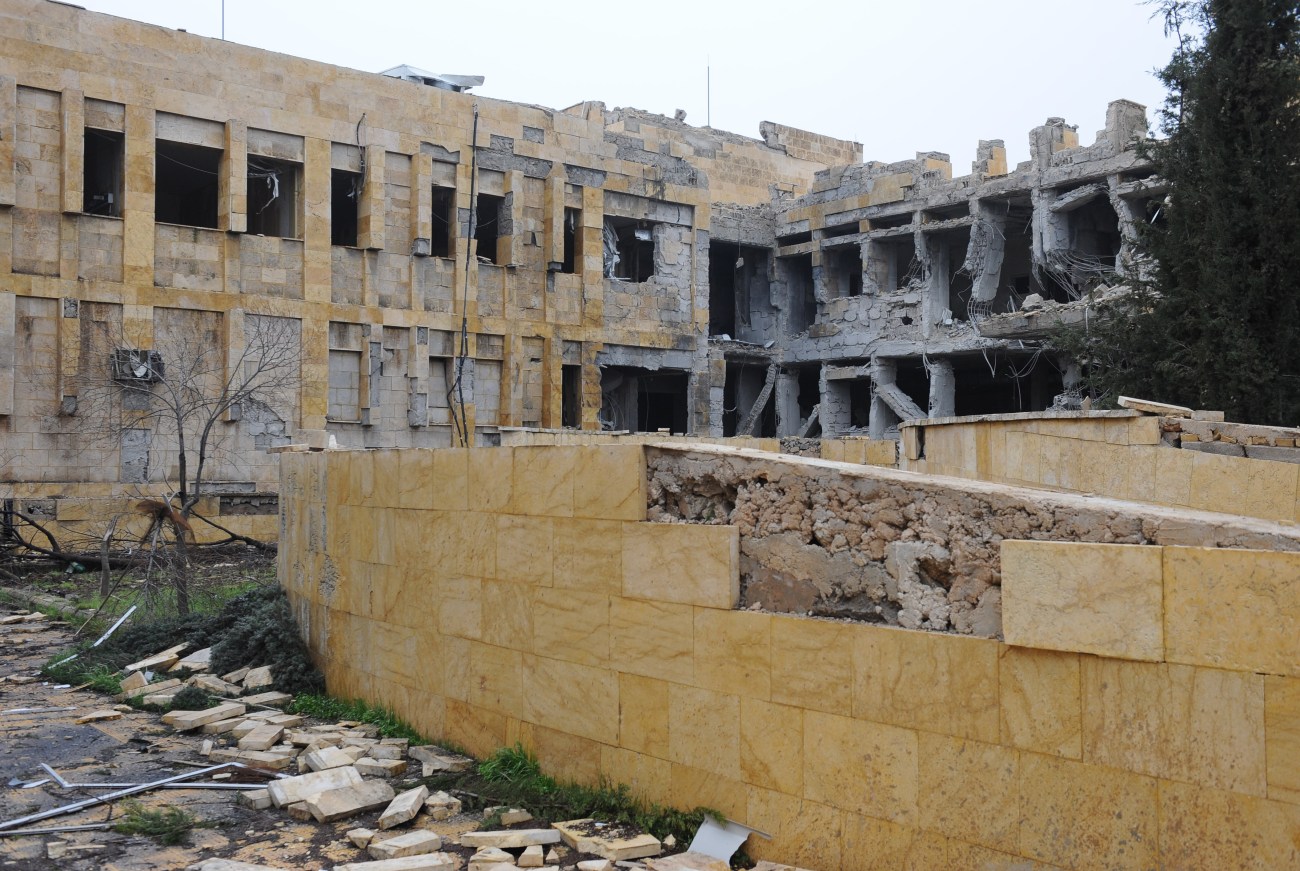
The Syrian army turned the national hospital at Azaz in northern Syria into a military base to attack the town last June but lost the town to rebels the following month. Rebels restored the hospital and the army then bombed it from the air in January.
Andree Kaiser/TNS/Zuma
One particularly striking example of the crisis can be found in Syria where hospitals were subjected to airstrikes, missile attacks, and shelling more than 600 times. As a result of regime and Russian airstrikes in 2020 in Idlib, in the northwest, the World Health Organization estimated that over a four-week period, more than 133,000 medical outpatient consultations would not take place, 11,000 trauma patients would not receive treatment, and 1,500 major surgeries would not be performed as they normally would in the region. Attacks often force a realignment of priorities in health care as the need to try to save the lives of people with traumatic injuries catastrophically forced hospitals to reduce services for chronic illness and maternal and child care.
That is only a snapshot from a war that has spanned three US presidents and 11 years. The conflict’s length and seeming intractability has numbed most of the world to the violence that health workers and their patients endured. It also reveals what happens when health workers become targets in conflict.
As throughout the Middle East, the Arab Spring protests in Syria began with peaceful demands and hopes for democratic reform that had already migrated from Tunisia to Egypt to Yemen. President Bashar al-Assad responded to the protests with ferocious repression by the notorious Mukharbat, the military intelligence agency that reports directly to the president, along with other security forces. They tortured teenage boys who scrawled anti-government graffiti on walls and shot and killed peaceful protesters. After some advisors urged Assad to be conciliatory, he went through the motions of meeting with reformers, but his strategy remained the use of lethal force against nonviolent protesters. Six months into the demonstrations, the UN reported that the regime had already killed three thousand demonstrators. By the end of 2011, the number killed reached five thousand. Many thousands more were arrested, many of them tortured to death.
It quickly became apparent that protesters suffering gunshot wounds had to avoid hospitals. Regime snipers shot at the injured as they tried to enter civilian hospitals. If wounded people made it inside, security forces often beat patients in emergency rooms; intruded into surgical suites and intensive care units, where they ripped out IV and oxygen tubes and dis-connected ventilators; and forcibly removed and arrested patients from the facilities. They were often sent to military hospitals, notorious for their use of torture. In one reported case, doctors had to beg the security forces to allow them to close a patient’s abdominal cavity before he was taken away. Police demanded that hospital medical staff provide information on patients, sometimes beating nurses and doctors to get it. Many health workers fled, sometimes leaving hospitals with severely depleted staff. Pro-regime health workers, contemptuous of the protesters, often denied them treatment or joined in the abuses against patients.
To respond to the needs for emergency care and surgery, doctors who were either opposed to the regime or appalled by the assaults on the wounded began clandestine efforts to provide care. It was a dangerous choice. The regime’s pervasive intelligence apparatus summoned health workers suspected of treating protesters for questioning at police stations or intelligence agency offices, where they risked arrest, detention, and torture. In the hidden clinics, care remained challenging, not just because of the need for secrecy but because of the difficulties and risks in obtaining equipment and supplies. The nation’s blood banks were run by the Ministry of Defense, so the makeshift clinics had to obtain blood on the black market. Even so, an underground medical network grew quickly.
Dr. Tayseer Alkarim was one of the leaders of this effort. He was four years into a prestigious oncology internship when the demonstrations began. Like many young Syrians, he thought political change was essential and was now possible. He joined the nonviolent movement for Syrian democracy while participating in the medical response. His group, Doctors Coordinate of Damascus, was the largest of the medical relief organizations springing up in response to the crisis. Now living in Paris, Dr. Alkarim told me that he and his colleagues improvised surgical suites in doctors’ offices, clinics, and nonmedical spaces, including homes. In some private hospitals and clinics, Doctors Coordinate of Damascus paid for services in cash and sought to protect sympathetic staff by not revealing the patient’s name. But at the major oncology center in Damascus where Dr. Alkarim was interning, the supervising physicians strongly identified with the regime and, he said, “were aggressive against all students who provided services to demonstrators.”
The clandestine locations for medical care proved no match for Syria’s ubiquitous security services. In August 2011, one of Dr. Alkarim’s physician friends was captured by the regime and forced to reveal the names of medical colleagues offering care to the protesters. Word got back to Dr. Alkarim that he had been named. His wife immediately left Damascus for Turkey and he went underground, moving from house to house while still working as a physician and managing the work of other doctors and health care providers. Just before Christmas, however, after leaving a meeting of medical coordination groups, he was arrested, blindfolded, and put in a car, where he was beaten and kicked. Dr. Alkarim was among more than 250 doctors arrested early in the protests for treating wounded demonstrators, according to a local coordination committee.
At the time in Syria, only the highest-ranked students got into medical school, but Dr. Alkarim’s membership in an elite profession offered no protection. On the contrary, interrogators told him he was a traitor to the nation. “You studied for free,” he was told, “and you stab us in the back.” The corruption that was endemic to the regime saved him, as a lawyer bribed a judge to secure his release on bail.
To formalize the basis for his and others’ arrests, in 2012 the regime adopted a new law that defined terrorism as including any act to “disturb public security” by use of particular weapons or “by means of any tool that serves the same purpose.” Under that law, anyone who participated in demonstrations against the regime or provided medical services to protesters was deemed a terrorist, which had the effect of criminalizing all medical care in opposition areas. As I was writing this book, I learned that one of my own students at Johns Hopkins had been a victim of these same policies. Mohammad Darwish followed the path of both of his parents and began medical school in Syria well before the protests began. In March 2011, he was arrested. Blindfolded and handcuffed, he was brought to what he later learned was a military airport.
There he was forced onto his knees in a corridor and put in an excruciatingly painful kneeling position, where he remained on and off for four days. Periodically guards beat and kicked him. His captors denied him food and water for two days. His refusal [to name names] led interrogators to employ electrical shocks on his elbows and knees that he told me “were like an explosion in my body.” The pain was so intense that he “was not even able to scream.” It was difficult to breathe. “I smelled flesh burning.” Because of the beatings, he could barely walk and asked to see a doctor. When his request was finally granted, the doctor slapped him, saying something like, “Does that make you feel better?” When finally put into a tiny cell with eleven others, he felt lucky to be out of the corridor and away from the arbitrary beatings.
Dr. Darwish learned from a cellmate that his medical student colleagues had been released and, along with his parents, were frantically looking for him. They had also started a campaign for his release, resulting in Amnesty International including him in its list of protesters whose release it sought. The campaign apparently succeeded, as after four weeks in detention Dr. Darwish was released, though not before the general in charge of the detainees showed Dr. Darwish his gun and said, “You will not be arrested again.” He remained [in Syria] until 2016 when a routine stop at a checkpoint almost led to his arrest. He knew he had to leave the country.
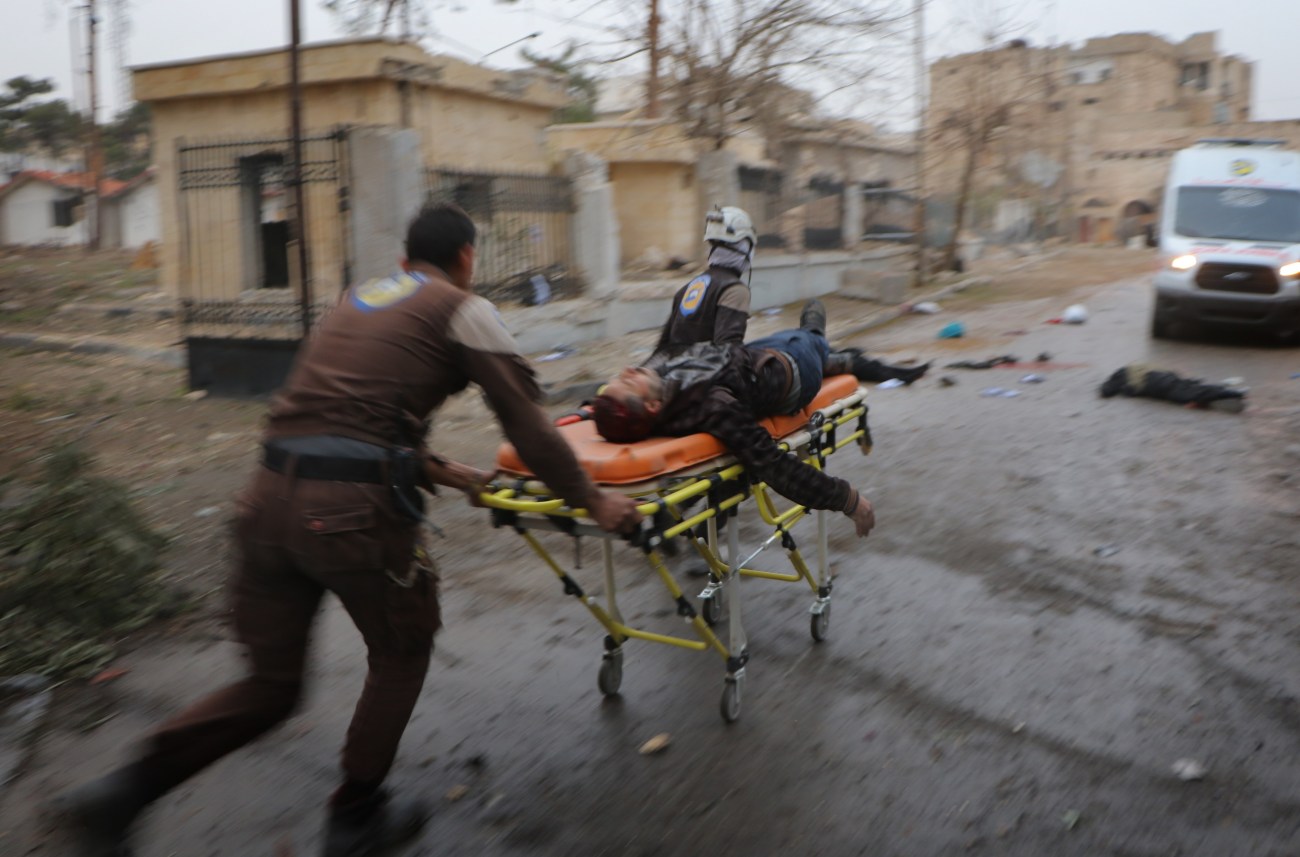
Search and rescue team members hospitalize a wounded civilian at the site of blast after Assad Regime’s strike over civilians in residential areas of Jub Al Quba neighborhood of Aleppo, Syria on November 30, 2016.
Ibrahim Ebu Leys/Anadolu Agency/Getty
During his studies and subsequent research position at Johns Hopkins, Dr. Darwish never spoke to me of his arrest and detention until it came up by chance in a conversation. He just didn’t think it was important to share the story but was not reluctant to convey his experience. He seemed remarkably unscarred by his torture, perhaps an example of the resilience often observed among some survivors of torture with strong political or ideological commitments. Maybe his easygoing personality helped too. Many other Syrian physicians were, however, deeply traumatized by the sudden turn in their lives from enjoying prestigious careers to being labeled as criminals subjected to arrest and torture, and experiencing the bombing of hospitals where they worked. In 2014, I traveled to Gaziantep, Turkey, to speak with 25 health workers who were based in opposition-controlled areas of northwest Syria to learn about their experiences trying to practice medicine while under assault. I had been invited by Dr. Zaher Sahloul, then-president of the Syrian American Medical Society, who I had gotten to know because of his advocacy to protect health workers and civilians in Syria.
The 25 Syrian health workers with whom I spoke were mostly young, as by then the most experienced doctors opposed to the Assad regime had the resources to leave the country. Six of the men I interviewed (only a handful of women were at the training) had been arrested and tortured; others had narrowly escaped. Two were detained because they had participated in demonstrations, and another because he had carried a sign with the names of other doctors who had previously been arrested. Others were incarcerated because they had or were suspected of having worked in makeshift field hospitals to provide care to wounded protesters. A pharmacist who established first-aid clinics in Idlib was deemed to be a terrorist. The men were subjected to beatings, electric shocks, and terrifying threats. A thoracic surgeon (I did not record their names for security reasons) told me that after he was arrested in 2012, interrogators demanded to know whether he moonlighted from his public hospital job in one of the clandestine facilities. Their suspicions were correct, but he refused to admit to the truth, even under torture that included electric shock and forced standing for twenty hours. “They told me that if I didn’t admit to working in a field hospital, they would torture me more,” he said, “but I did not for fear they would kill me.” He felt fortunate that his supervisor at the public hospital protected him when questioned, and he was released. Another health worker arrested at a checkpoint reported similarly: “The most important thing was not to reveal my role in medical work.”
“We are under great danger of being killed or injured any time,” the director of the Idlib Health Directorate, which coordinated services in opposition-held areas of the governate, told me during my trip to Gaziantep in 2014. “All the time and any time: in the morning, in the evening. You don’t know if you are going to wake up or not,” he said. He was speaking of the regime’s missile attacks on and bombing and shelling of hospitals. They began in August 2011, even before the pro-democracy movement had led to armed conflict. As the regime’s violence against protesters continued, groups began taking up arms against it. They were initially composed of individuals seeking political reform, but over time other groups, including jihadist organizations and the Islamic State, entered the conflict. Gulf countries, Iran, Hezbollah, Russia, the United States, and others provided weapons, funds, and in some cases military forces, pursuing their own objectives and increasing the lethality of the war. Syrian missiles, shelling, mortar fire, and bombings of hospitals soon become a barbaric routine in contested regions of the country.
The Assad strategy was executed on a vast scale, never before seen. He attacked eight hospitals by the end of 2011, and ninety more in 2012. The World Health Organization reported at the end of 2012 that 78 percent of ambulances had been damaged and more than half were out of service. By fall 2013, an independent commission established by the UN Human Rights Council found that “deliberate targeting of hospitals” is “one of the most alarming features of the Syrian conflict.” In mid-2014, the World Health Organization reported that only 40 percent of public hospitals were fully functioning (and that included hospitals in regime areas, where hospitals were mostly intact).
The Syrian military by then had added barrel bombs to its arsenal. These consisted of oil-drum-sized containers filled with explosives, bolts, and other metal objects, often dropped from helicopters hovering directly above the target. The blast force of this primitive but powerful weapon forced shrapnel deep into every area of the body, and often severed limbs. The regime used barrel bombs thirty times in attacks on hospitals by mid- 2014.
The combination of war and the destruction of the health system caused a health crisis. Diseases that were once rare, including typhoid fever, measles, and leishmaniasis, reappeared. Chronic malnutrition became widespread. The use of explosives in civilian areas led to more than six hundred thousand people suffering traumatic injuries, a figure that would soon rise to more than a million, even as hospital capacity for surgery plummeted. To address the crisis, Syrians in opposition-controlled areas responded with purpose and alacrity. They set up ad hoc administrative structures to manage health care services. By 2014, these had evolved into directorates that, to a greater or lesser extent, coordinated services. Another indigenous Syrian organization, the Assistance Coordination Unit, with support of international and Syrian NGOs, created a Polio Control Task Force to organize a vaccination campaign in opposition-controlled areas in response to the outbreak. Although initially hindered by a lack of access to vaccines, the campaign managed to reach a million children in opposition-controlled areas, including places ISIS governed. Even so, tensions among directorates and other entities claiming responsibility to coordinate services added to the burdens afflicting health care.
One of the most successful of the health directorates in organizing services was in the rural areas of the Idlib governate (the regime-controlled city of Idlib). In Gaziantep, I spoke to its director about the challenges he and his colleagues faced. An orthopedist originally from Aleppo, he coordinated the work of thirty-eight hospitals, many of them field hospitals opened in schools, municipal buildings, houses, and even chicken coops. The once-several- thousand-member medical staff in the area had been reduced to 250 health workers to serve a population that was then of more than 2,000,000 people, 750,000 of whom had been displaced from other parts of Syria. Electricity for the facilities came only from generators, and fuel often ran short to support surgery for the thousands of traumatic injuries a month. Appropriate medical instruments were lacking. The entire directorate had no intensive care unit and insufficient numbers of incubators for high-risk newborns. Doctors told me that more babies were dying from complications from the increasing number of home births, as women feared either getting killed en route to hospitals or dying in an attack after arriving there.
His most wrenching challenge, though, was coping with the regularity of air and missile strikes on hospitals in the governate. He told me that more than a third of the hospitals in the region had been attacked in the year before we spoke, some of them multiple times. He was present during two attacks, one of them inflicted on a new orthopedic center on the very day it was scheduled to open. “One of the staff was standing in the door of the orthopedic center, and he died that day,” he said. Months later, the same facility was attacked again, closed for a week while repairs were made, and then reopened. Transporting patients was also dangerous, he told me.
But not really. The health workers, working long and exhausting shifts, coping with complex injuries and shortages of supplies, staff, and medication, and in constant danger, suffered a huge toll physically and psychologically. The crushing workload of too many injured people needing attention from too few staff led to tensions with their families because of low (or no) pay and exposure to violence. They also suffered what bio-ethicists call moral distress, where health providers know what the medically appropriate and ethical course of action is, but because of external or internal constraints cannot take it. “You are not doing what you should,” the orthopedist said. As a result, “we are demoralized and burned out.” He personally felt vulnerable because of his role in developing a health system outside government control. He never traveled alone anymore. Despite his accomplishments in organizing a functioning health system, the director told me, “I am thinking of leaving.” He did not. Remarkably, six years later, when Idlib became the epicenter of the conflict, he was still running the directorate, having built it into a large and sophisticated operation.
In Aleppo, the Medical Council reported that its five main field hospitals treated more than seventy thousand people in 2013 and performed ten thousand surgeries. The complexity of the injuries and the shortages of staff and supplies added to the burdens. Clinicians’ emotions, as well as skills, were overwhelmed by the injuries they saw, especially those from barrel bombs. One doctor told me, “I have seen ruptured spleens and shrapnel the size of a human hand.” Another surgeon said, “I have never seen such injuries.” Still, another recalled his own sense of horror: “I saw a mother and daughter whose bodies were blown apart, but their hands were still clasped together.” The disruptions from the bombing, meanwhile, radically interfered with already difficult operations even when a hospital was able to keep functioning. One doctor told me that while he was operating on a patient, a barrel bomb hit the hospital, shattering windows, breaking doors, and ripping bricks off the façade. The generator needed for the operation stopped, but “twenty minutes later, we got the generator going and I returned to the operation.”
Parts of Aleppo had no running water, many pharmacies had closed, and dialysis centers could only operate with dramatically restricted hours as there was only limited fuel for electricity. Only about two dozen general or orthopedic surgeons remained, and anesthesiologists and vascular surgeons were gone. Dentists often stepped in to learn surgery on the job. Armed groups in the area often added to the tension, pressure, and moral distress of hospital staff by demanding priority care for their troops, often threatening doctors and nurses with death if they didn’t get it. I found it hard to grasp how they persevered.
Why were hospitals and doctors targeted? “In Syria,” the Idlib health director said, “the best students go to medical school, which then gives them a kind of social status. That status is what makes the regime concerned about them. And with the regime’s goal of destroying the areas that are not under its control, the doctors are targeted more than others.” Other Syrian doctors shared that view: as leaders in the community, they were singled out. No doubt there is truth in that explanation. There are other likely reasons for the regime’s repeated targeting of hospitals and doctors. The Human Rights Council’s independent commission on Syria identified one: that “the pattern of attacks indicates that Government forces deliberately targeted hospitals and medical units to gain military advantage by depriving anti-Government armed groups and their perceived supporters of medical assistance.” Without hospitals and doctors, people couldn’t survive the shelling and the bombing, and unending traumatic injuries. The destruction of hospitals and health services also was likely part of a strategy to demonstrate the futility of supporting opposition forces, to compel local populations to move and to demoralize armed groups seeking to try to maintain services in areas they controlled. These purposes were also reflected in the grotesque, persistent war crimes the regime committed to destroy the opposition and their supporters, including bombing and shelling markets, using “double-tap” tactics that targeted rescuers after an initial attack, employing chemical weapons, encircling highly populated areas that led to starvation, and detaining and likely torturing more than one hundred thousand people, thousands of them to death.
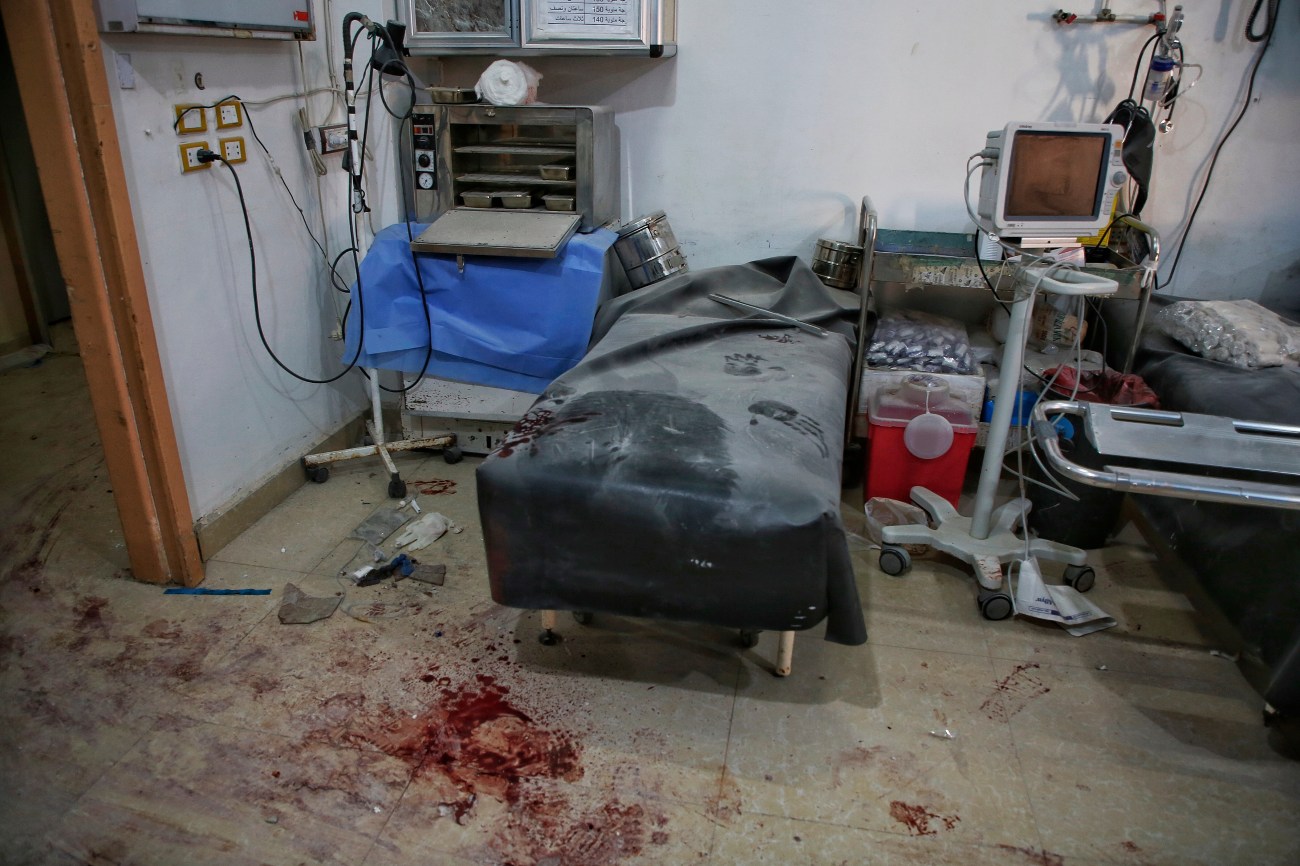
Al-Atareb Hospital in Aleppo Governorate, northern Syria, which is under the control of the Syrian opposition, was out of service due to the bombing of the Syrian regime, while 6 civilians were killed in the hospital and others were injured on March 21, 2021
Muhammad al-Rifai/NurPhoto/AP
At the time of interviews in Gaziantep in 2014, neither the doctors with whom I spoke, nor I, imagined then that the war, and the assaults on civilians and hospitals, would grind on for many years to come. In June 2017 I returned to Gaziantep, this time as part of a collaboration among Johns Hopkins, the Syrian American Medical Society, and the International Rescue Committee to help health workers respond to the impossible ethical challenges they faced in the extreme circumstances in which they had to work. By then Syria, with help from Russia, had launched more than 450 attacks on more than three hundred medical facilities and killed almost eight hundred medical personnel. In 2016 and 2017, they attacked ambulances more than 200 times, most using air-to-surface missiles or shelling. Almost 150 of these involved double-tap attacks. To increase their safety, Syrians had moved almost 100 field hospitals to basements, underground, and even into caves in the side of a mountain. Syria and Russia responded with “bunker-buster” bombs that could penetrate below the ground to reach fortified and underground hospitals.
A physician told one of my colleagues on the project, “I am subjected to constant punishment and self-lashing continuously without interruption. I am actually doing humanitarian work and helping the wounded and saving the lives of people, but the situation continues. Every day someone dies—we cannot save lives because there is no possibility.” He tried to convey the unfathomable burden of the years of strain. “We have been living in this state for many years. Sometimes I think really, how do I eat, drink, and live, and think about the bombing and the people who died, with the sense that my mind will explode…When a wounded [person] dies and his family starts weeping on him in the hospital, I feel guilty, sometimes I feel that I killed him because I could not help.”
Female health workers had to cope with additional pressures, such as needing accompaniment for travel in rural areas and prohibitions on touching a male patient, denial of equal salaries and appointment to senior positions, and lack of respect for their professionalism. One woman said that the prevailing attitude was that “female doctors do not know as much as male doctors.
The doctors had also been deeply affected by their fellow physicians’ experience in trying to cope with a chemical attack in April 2017 in the town of Khan Shaykhun in southern Idlib. Much of the medical effort proved futile. One doctor explained, “I think that medical providers barely saved one to two percent of the chemical attack victims. We have no prior training, medical staff, or equipment to deal with it. I believe that what we were able to provide was too little.” The chemical attacks demoralized the medical community even further. The surgeon who worked in a cave hospital said, “It had a big effect on creating a hopeless environment. We fear being victims of the attack and not finding anyone to rescue us.” Another surgeon, who had worked throughout the war, said the fear and, with it, loss of hope, reached new depths. Another doctor said, “Although we have a lot of experiences with bombs and other aerial weapons, we never had to stop working, thank God. We lost all hope when chemical weapons started being used we no longer felt safe in the cave.” Many felt abandoned. One said, “death has become normal to the rest of the world, no one is reacting.”
In the spring of 2019, Russia and Syria began an assault on Idlib, the last holdout of opposition forces. In May alone, in one twelve-hour period, Russia bombed four hospitals. It employed bunker-busting bombs again. By the end of February 2020 almost a million people, many of them previously displaced, were forced out of their homes, 80 percent of them women and children. Hundreds of thousands of people were stuck in informal camps with little access to sanitation, shelter, schools, or health care. Some people living in the camps burned old clothes to gain some warmth.91 Health facilities had to suspend operations. Thirty-one of them relocated closer to the Turkish border. The pressures on remaining facilities, operating far beyond their capacity, led to mayhem.
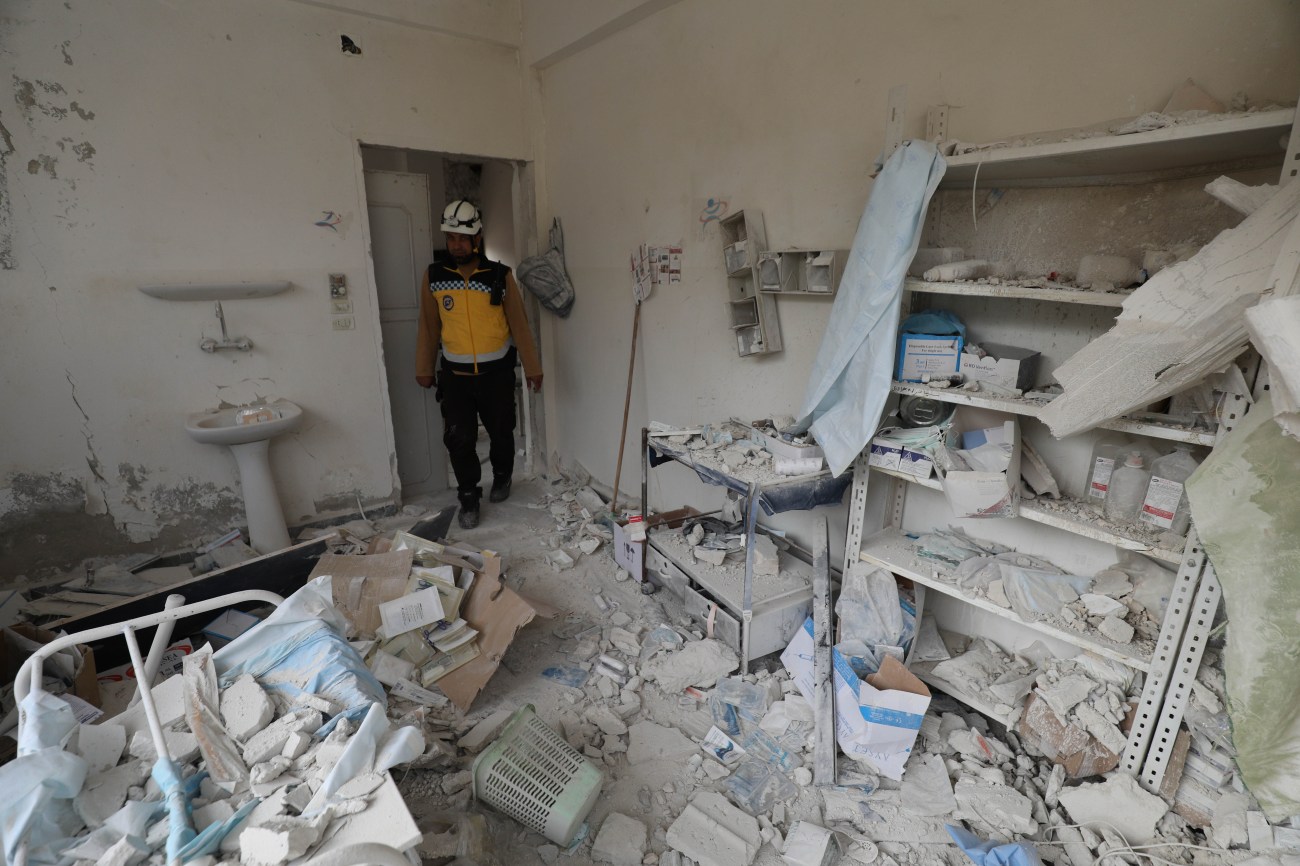
A member of the Syrian Civil Defence (The White Helmet) checks the rubble and debris at a medical centre following reported shelling by the Syrian government, in the Syrian town of Hbeit in the southern countryside of the rebel-held Idlib province on April 30, 2019.
Omar Haj Kadour/AFP/Getty
The atrocities in Syria were documented contemporaneously as in no previous conflict. In addition to testimonial evidence, international and Syrian NGOs, investigators from the media, and the UN and flight trackers relied on real-time video, satellite imagery, analysis of soil samples, apps for data collection, and even cockpit transmissions. Courageous Syrians smuggled out hundreds of thousands of photos of men tortured in Syrian detention facilities. The UN General Assembly established a special unit to collect evidence of war crimes and crimes against humanity for possible prosecution.
Global mechanisms had been established in the years before the war in Syria to address mass atrocities, including a “Responsibility to Protect,” to prevent or stop atrocities. The UN special adviser on the Responsibility to Protect, Edward Luck, said that the doctrine was an answer to the longstanding problem in which “the capable have stood by as the slaughter of civilians unfolded. They have looked for excuses not to act rather than for reasons to intervene.”
Russia used its veto power at the Security Council to block attempts to compel the Syrian government to stop the assaults or face consequences if it did not. It repeatedly blocked referrals to the International Criminal Court. The most it allowed was cross-border humanitarian aid into Syria without the permission of the Syrian government, but it ended that commitment in 2020 even in the midst of the COVID-19 pandemic. Syria became such a toxic subject at the Security Council that some governments sought to avoid discussion of Syria altogether during debates on violence against health care in conflict. When UN Secretary-General Antonio Guterres appointed a UN board of inquiry in 2019 to review breaches of a “no-strike” list in Idlib, its mandate precluded reaching conclusions on potential legal liability. The report it issued pulled punches. The board found that Syria and its allies struck hospitals on the list but declined to name the allies to which it referred, particularly Russia.
The question remained whether the United States would mobilize allies to act outside the Security Council, but there was never sustained pressure on President Barack Obama to do so. Syria never became a cause for activists and students as Darfur had been, with rallies on the National Mall and “Save Darfur” signs outside churches and synagogues exhorting action. The administration faced few political demands to act beyond those from human rights and humanitarian groups, editorialists, and Syrian expatriate groups and their allies in Congress. Influential senators and others promoted “safe zone” or “no-fly” zones, patrolled by US airpower, to protect hospitals and other civilian facilities. without Security Council authorization. The Pentagon opposed it. By 2013, moreover, Obama had shown that he would not take any military action against Syria after Assad has crossed Obama’s “red line” against the use of chemical weapons. Two years later, former senior State Department officials and others urged President Obama to establish three zones to provide a safe place for civilians in northern Syria. The idea remained controversial, and in any event, Obama had not changed his position and the argument by then had become sterile. When Donald Trump became president, he engaged in pinprick retaliation for more chemical weapons attacks but was indifferent to the continuing carnage.
The governments that could have protected civilians from Assad issued futile condemnations but declined to act beyond imposing economic sanctions. At the end of 2019, Susan Rice, National Security Adviser under Obama, acknowledged that “the human costs of [Assad’s] slaughter stung our collective conscience” and that “the gap between our rhetorical policy and our actions constantly bedeviled U.S. policymaking.” She nevertheless excused nonintervention as “the right choice for the totality of U.S. interests.”
As the conflict approached a decade in length, hospitals that survived were desperately short of fuel to run generators. Resources to address the COVID-19 pandemic were inadequate and living conditions for the dis- placed people promoted transmission. In March 2020, German Chancellor Angela Merkel called for a no-fly zone in the region. Her remarks amounted to whistling in the dark.
On September 20, 2020, almost ten years after Dr. Mohammad Darwish was arrested and tortured in Syria, intelligence agents in the city of Homs arrested his mother, Basma Khaldy, an ob-gyn, for allegedly offering treatment to wounded demonstrators in 2011. She was later transferred to military intelligence headquarters in Damascus. With the help of connections and bribes, Dr. Khaldy was released on October 11, but intelligence agents continued their harassment, coming to her house to question her. After months, and more bribes to obtain a passport, she and her husband, also a doctor, were among the 70 percent of the country’s health workers who fled the country. More than nine hundred of the health workers who remained during the war had been killed.
March 2021 marked the tenth anniversary of the start of pro-democracy protests that were greeted with brutality and led to war. By then, more than 3,300 health workers had been arrested, detained, or disappeared. On March 21, artillery shelling of a major surgical hospital in western Aleppo killed seven patients, among them a twelve-year-old boy, and injured fifteen others, including five medical staff. It went largely unnoticed in the international media.

